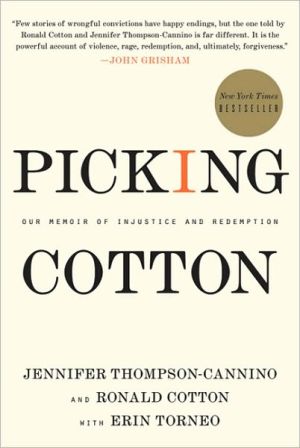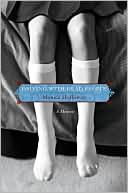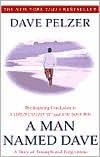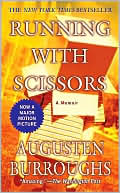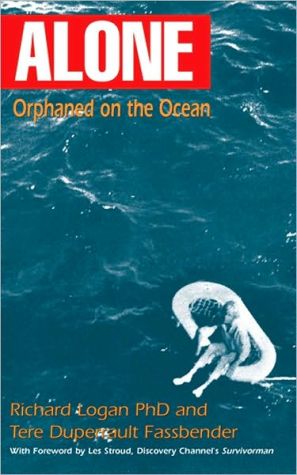Picking Cotton: Our Memoir of Injustice and Redemption
A New York Times BestsellerJennifer Thompson was raped at knifepoint by a man who broke into her apartment while she slept. She was able to escape, and eventually positively identified Ronald Cotton as her attacker. Ronald insisted that she was mistaken-- but Jennifer's positive identification was the compelling evidence that put him behind bars. After eleven years, Ronald was allowed to take a DNA test that proved his innocence. He was released, after serving more than a decade in prison...
Search in google:
In this true and inspiring book, a unique and transcendent friendship rises from the depths of a shocking crime and a devastating miscarriage of justice. The Washington Post - Kate Tuttle Their story, told here in alternating sections, emphasizes that both were victims. Still, as both acknowledge, Thompson-Cannino, traumatized as she was, spent the next decade in freedom, marrying and having kids, while Cotton endured prison. Left mostly unexamined is the role race played in his incarceration, but even the most cynical reader will be impressed with Cotton's resilience and grace.
\ Prologue \ September 2006\ Ronald Cotton stands a few rows behind Jennifer Thompson-Cannino, watching as she cranes her head through the crowd, looking for him among the faces of the parents who have come out to watch their children play soccer. All of the fields at Northeast Park in Gibsonville, North Carolina, are occupied on this bright autumn afternoon: It’s tournament day, with a parking lot crammed full of yellow school buses, SUVs, and station wagons to prove it.\ "Where are you?" she says into her cell phone, unable to find him.\ "I’m right here," Ron says, enjoying the joke. Then he reaches out and touches Jennifer’s arm, causing her to turn and jump. "It’s so good to see you," she says, laughing and moving close to embrace him. "You’d think I would’ve spotted you!" Wearing a blue baseball hat, Ron at six foot four towers over her. He’s got to lean waay down to hug Jennifer, a tiny blonde with bobbed hair. The sun catches the sterling medallion he always wears around his neck: an eagle in flight.\ Ron immediately gets into the game. "C’mon! Don’t let ’em take that ball!" he shouts, clapping his hands.\ Beside him, Raven, his nine- year- old daughter in neat braids he helped do that morning, shoots him a look. "Daddy!"\ "What? Am I embarrassing you?" She nods, which only makes Ron yell louder. "Let’s go!"\ He is cheering on Jennifer’s sixteen-year-old daughter, Brittany, who plays center-midfield, the link between offense and defense. Her brown ponytail bopping behind her, she keeps her cleats close to the ball, switch- backing across the field to try to keep it away from the other side until she’s got a clear path to pass it to her fellow players. When she sees her opening, Brittany makes a strong, sure kick and sends the ball to her teammate, who takes off for the goal. The crowd yells for the black and white ball to make it into the net as if nothing could matter more.\ The Reds, Brittany’s team, win the first game of the tournament, and then they break for lunch. Brittany, spotting Ron and Raven with her mom, jogs over and hugs them both, happy they are there. The four of them head over with the other parents to the park’s pavilion. With his Burger King bags picked up from the drive- in, Ron isn’t part of the usual soccer parent crowd: moms like Jennifer who unpack neatly prepared sandwiches and snacks from Tupperware and coolers. After the kids eat, Brittany heads off to the grass to show Raven how to kick straight and dribble, while Jennifer and Ron catch up. One nosy mom can’t resist and comes over to say hello.\ "Jennifer, Brittany was just great today!" she says. "Too bad your husband missed it. Where is he?" "He’s with my son, doing ‘guy stuff,’ but they should be here any minute," says Jennifer.\ The mother’s eyes dart over to Ron and back to Jennifer. She can’t figure it out. "So how do y’all know each other?" the mom says, motioning to Ron.\ Jennifer and Ron look at each other, smiling. They let the moment settle between them, hanging in the air like the sweet green smell of freshly cut grass, ready for hordes of high school girls to trample it.\ "We go way back," Ron says, in his characteristic way of understating things.\ What they don’t say is that twenty- two years ago, Jennifer sat in a jail house just five miles down the interstate, looked at seven black men standing in front of her, and picked Ronald Cotton as the man who had brutally raped her eleven days before.\ Excerpted from Picking Cotton by Jennifer Thompson- Cannino.\ Copyright © 2009 by Jennifer Thompson- Cannino.\ Published in March 2009 by St. Martin's Press.\ All rights reserved. This work is protected under copyright laws and reproduction is strictly prohibited. Permission to reproduce the material in any manner or medium must be secured from the Publisher.
\ From Barnes & NobleOn the 1984 night that changed her life, Jennifer Thompson was a 22-year-old college student when she was awakened from a sleep by a knife-wielding rapist. She escaped from her attacker, and several days later, she picked the culprit from first a mug shot and then a physical lineup. Or so she thought. Ronald Cotton, the man who Jennifer was "absolutely, positively, without-a-doubt certain" was her rapist, served 11 years for the crime before he was exonerated by DNA evidence. Two years after his release, he and Jennifer met and, against every expectation, formed a resilient friendship. Picking Cotton, their joint memoir, speaks not only to their tragic shared experience but also to the issue of mistaken eyewitness testimony, the number one cause of wrongful convictions. Heartbreaking and then inspiring.\ \ \ \ \ From the Publisher\ "Few stories of wrongful convictions have happy endings, but the one told by Ronald Cotton and Jennifer Thompson-Cannino is far different. It is the powerful account of violence, rage, redemption, and, ultimately, forgiveness." \ —John Grisham"The story of Jennifer Thompson-Cannino and Ronald Cotton, as told in first-person voices in this gripping, well-written book, is exceptional." \ —St. Petersburg Times“Even the most cynical reader will be impressed with Cotton’s resilience and grace.”\ —The Washington Post “Picking Cotton is the nonfiction title you must not overlook this year. It is as compelling as any fiction, yet the truth at its core will move you to tears.” \ —The Louisville Courier-Journal"Picking Cotton is ultimately an uplifting story of hope."\ —The Charlotte Observer\ \ \ \ Kate TuttleTheir story, told here in alternating sections, emphasizes that both were victims. Still, as both acknowledge, Thompson-Cannino, traumatized as she was, spent the next decade in freedom, marrying and having kids, while Cotton endured prison. Left mostly unexamined is the role race played in his incarceration, but even the most cynical reader will be impressed with Cotton's resilience and grace.\ —The Washington Post\ \ \ \ \ Publishers WeeklyIn July 1984, Thompson-Cannino, a white college student in Burlington, N.C., was raped by a black intruder. She identified her assailant in a lineup as Cotton; he was sentenced to life plus 50 years. When he secured a new trial in 1987, he found himself charged with a second attack and sentenced to two life sentences plus 54 years. DNA evidence at a new trial, eight years later, exonerated him of both charges. Authors Thompson-Cannino and Cotton offer this riveting account of their separate, yet connected, lives through those years. The first two parts describe their dreadful experiences: for her, in the "[s]aliva swabs, vaginal swabs, pubic hair combings" of the rape kit; for him, being "sprayed like a dog getting defleaed" at the prison. Thompson-Cannino describes the invasive procedures following a rape, unsettling police procedures (the lineup), unfamiliar legal stages (such as a probable cause hearing) and the disturbing trial. Cotton leads readers through the events following a conviction (the several prisons, adjustments to the prison norm, the alternating hope and despair of the judicial stages). Redemption is the subject of the third part, where Thompson-Cannino and Cotton forge a path to genuine friendship in advocating for the wrongfully convicted. Together they have produced a well-modulated and generously balanced memoir-at once a devastating and uplifting crash course in the criminal justice system. (Mar.)\ Copyright © Reed Business Information, a division of Reed Elsevier Inc. All rights reserved.\ \ \ \ \ Library JournalIn 1984, Thompson-Cannino, a 22-year-old white, North Carolina college student, was viciously raped by a black intruder and identified Cotton as her attacker. Her testimony led to his conviction and a sentence of life imprisonment, though DNA evidence exonerated him 11 years later. Unbelievably, the two formed a genuine friendship and now together advocate for judicial reform. Audie Award nominee Richard Allen and Karen White (My Kind of Place) bring this poignant, simply unforgettable, joint first-person account wholly to life. Recommended for all. [See Major Audio Releases, LJ 2/1/09; the St. Martin's hc, a New York Times best seller, was recommended as "an asset to any crime collection," LJ 2/1/09.—Ed.]—Beth Farrell, Portage Cty. Dist. Lib., Garrettsville, OH\ \ \ \ \ Kirkus ReviewsA rape victim and the man she falsely accused-in good faith-collaborate to share an important, affecting story of fatally mistaken identity. Thompson-Cannino was a college student at Elon College in1984, when a knife-wielding man broke into her Burlington, N.C., apartment and raped her. She saw him clearly and escaped the apartment before he could harm her further. After working with a police sketch artist and examining mug shots gathered by police, she identified 22-year-old Cotton, who was convicted by a jury and sentenced to life in prison. He maintained his innocence from the time police approached him, but nobody except his family believed him. Sophisticated DNA testing did not exist in the mid-'80s, and few people inside or outside the criminal-justice system understood the unreliability of eyewitness identification, especially across racial lines. (Thompson-Cannino is Caucasian, Cotton African-American.) Convicted prisoners rarely receive attention when claiming innocence from their cells, and they usually lack the money, the legal assistance and the support network to make their assertions heard. Thompson didn't have much money, but he drew strength from his family and found unusually receptive lawyers willing to represent him pro bono in time-consuming, seemingly hopeless post-conviction proceedings. Journalist Torneo alternates between the first-person narratives of Thompson-Cannino and Cotton. When she heard that a DNA test had set him free after 11 years in prison, she was stunned and guilt-ridden. After seeing a TV documentary about how eyewitnesses make mistakes, in which Cotton said he wondered why he'd never heard from the woman responsible for his wrongful incarceration,she arranged to meet him. Despite the nervousness of her relatives and the anger of his wife, they built up mutual trust, became friends and eventually began traveling together to educate audiences about flaws in the criminal-justice system. Injustice and redemption are overused words, but this heartfelt joint memoir justifies its subtitle. Agent: Christine Earle/ICM\ \
